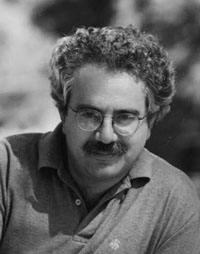 |
Yannis G. Kevrekidis
Princeton University
Hougen Visiting Professor
Yannis G. Kevrekidis studied Chemical Engineering at the National Technical University in Athens. He then followed the steps of many alumni of that department to the University of Minnesota, where he studied under the supervision of Rutherford Aris and Lanny Schmidt. He also worked with Dick McGehee and Don Aronson in the Mathematics Department on computational studies of dynamical systems, something that still remains the main theme of his research. He was a Director's Fellow at the Center for Nonlinear Studies in Los Alamos in 1985-86. He has been at Princeton since 1986, where he teaches Chemical Engineering and also Applied and Computational Mathematics. His research interests are centered around the dynamics of physical and chemical processes, types of instabilities, pattern formation, and the ways to study and understand such phenomena computationally. Recently he has also developed an interest in multiscale computations. He has been a Packard Fellow, a Presidential Young Investigator, and the Ulam Scholar at Los Alamos National Laboratory. He holds the Colburn Award of the AIChE, and a Humboldt Prize.
Hougen Lectures, Fall 2002
EQUATION-FREE MULTISCALE COMPUTATON: ENABLING MICROSCOPIC SIMULATORS TO PERFORM SYSTEM LEVEL TASKS
Thursday, September 12 at 1:00 p.m. (refreshments at 12:45 p.m.)
Room 1800 Engineering Hall
I will present and discuss a framework for computer-aided multiscale analysis that enables models at a "fine" (microscopic/stochastic) level of description to perform modeling tasks at a "coarse" (macroscopic/systems) level. These macroscopic modeling tasks, yielding information over long time and large space scales, are accomplished through appropriately initialized calls to the microscopic simulator for only short times and small spatial domains. Traditional modeling approaches first involve the derivation of macroscopic evolution equations (balances closed through constitutive relations). An arsenal of analytical and numerical techniques for the efficient solution of such evolution equations (usually partial differential equations, PDE's) is then brought to bear on the problem. Our equation-free (EF) approach, when successful, can bypass the derivation of the macroscopic evolution equations when these equations exist conceptually, but are not available in closed form. I will discuss how the mathematically assisted development of a computational superstructure may enable alternative descriptions of the problem physics (e.g., lattice Boltzmann (LB), kinetic Monte Carlo (KMC) or molecular dynamics (MD) microscopic simulators) executed over relatively short time and space scales to perform systems level tasks (e.g., integration over relatively large time and space scales, "coarse" bifurcation analysis, optimization, and control) directly. In effect, the procedure constitutes a systems-identification based, "closure-on-demand" computational toolkit, bridging microscopic/stochastic simulation with traditional continuum scientific computation and numerical analysis. I will illustrate these ideas for "numerical enabling technology" through examples from chemical kinetics (LB, KMC), rheology (Brownian dynamics), homogenization and the computation of "coarsely self-similar" solutions, and discuss various features, limitations, and potential extensions of the approach.
ADDRESSABLE CATALYSTS: SOME TWISTS AND TURNS IN THE PATH OF IMPROVING SURFACE ACTIVITY
Thursday, October 3 at 1:00 p.m. (refreshments at 12:45 p.m.)
Room 1800 Engineering Hall
Focusing an addressable laser beam to differentially heat a Pt single crystal surface, we have been able to modify the surface catalytic activity in real time and space. Ellipsomicroscopy imaging of local conditions (such as reactant and product local coverages) enables us to close the loop between sensing and actuation (both spatiotemporally resolved). I will show that pulses and fronts, the basic building blocks of patterns, can be formed, accelerated, modified, guided, and destroyed at will. Image processing and feedback allow the design and implementation of new classes of non-local evolution rules. Usually chemical processes are designed to operate under optimal steady-state conditions, possibly stabilized through feedback. Strategies to operate the entire process under non-steady-state (e.g., periodic) conditions are also being developed, leading to the emergence of commercially successful processes such as pressure swing operation or reverse flow reactors. In loose analogy with resonance in linear systems, the benefits emerge when the characteristic times (periods) of the non-steady operation are close to important intrinsic time constants of the system itself. I will also show initial attempts to explore the optimization of reaction rates by interacting simultaneously with intrinsic system time and space scales. These policies are implemented on a Pt catalytic surface addressable through our moving, focused laser beam.
